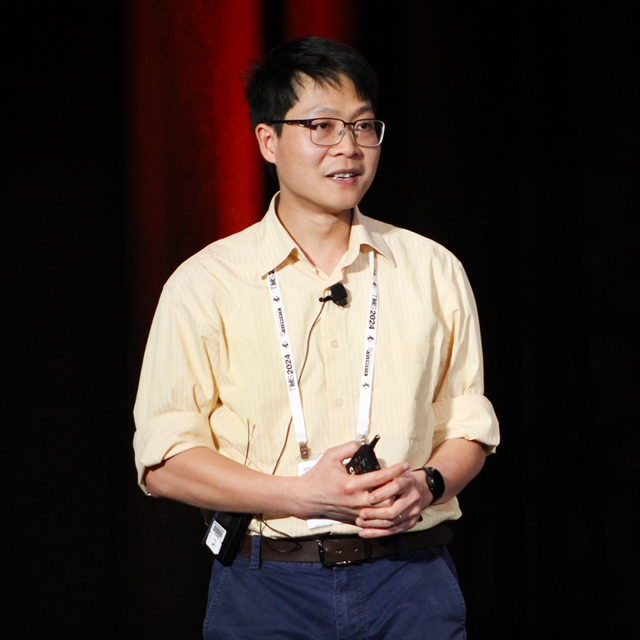
TRAILBLAZER: Associate Professor Phạm Minh Sơn. — Photo courtesy of Sơn
Associate Professor Phạm Minh Sơn has just been awarded the 2024 Young Innovator in the Materials Science Award by The Minerals, Metals & Materials Society (TMS), one of the largest professional organisations for material scientists and engineers.
Sơn's research combines 3D printing technology with metal science to create crystal microstructures that are lightweight yet highly durable and programmable to become intelligent by simulating structures and principles of natural crystals. This is expected to have wide applications in aviation and space exploration. Thanh Nga asks Sơn about his research.
Inner Sanctum: Could you tell us a little about yourself?
I'm currently a senior lecturer and associate professor in the Department of Materials at Imperial College London, leading a research team on advanced materials, structural system safety, and metal 3D printing.
Previously, I spent three years working in the US, implementing a cooperation project between Carnegie Mellon University, the National Institute of Standards and Technology (NIST), and car companies like General Motors and Ford.
I hold a doctorate in mechanical engineering from the Swiss Federal Institute of Technology in Zurich, where my PhD thesis on the destruction of steam turbines in nuclear power plants was awarded the ETH-ETHz medal. I also have a master's degree from Korea University and an engineering degree from Hà Nội University of Science and Technology.
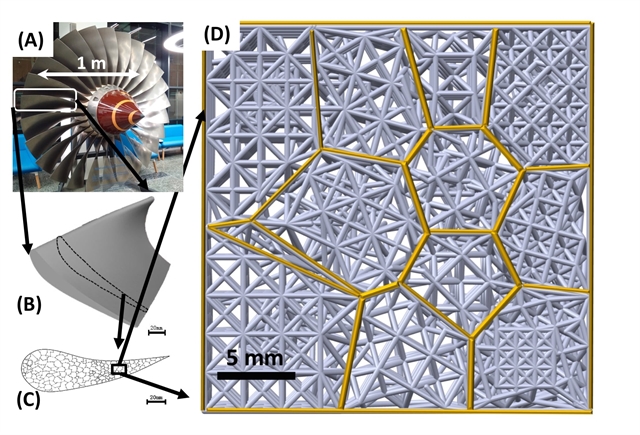
STRUCTURAL COMPLEXITY: Application prospects of crystal microstructure. Photo courtesy of Sơn
Inner Sanctum: What led you to choose materials science as your field of study?
I chose materials science because it is a multidisciplinary field that combines mechanics, mathematics, physics, and chemistry. Understanding the behaviour and safety mechanisms of components operating in extreme conditions requires in-depth knowledge of materials science, particularly the internal microcrystalline structure and its interaction with various physical, chemical, and mechanical factors.
For example, the turbine wing of an aircraft engine must withstand extremely high loads and temperatures (up to 2,000°C behind the combustion chamber). Similarly, in metal 3D printing, producing high-quality parts requires understanding the solid freezing mechanism and crystal formation process during heat changes. My research directions have always started with mechanical, physical, chemical, and manufacturing problems, but have ultimately led me to materials science.
Inner Sanctum: Can you tell us more about the work of your research group at Imperial College London?
The main objective of my research team is to develop super-lightweight, yet efficient, durable, and safe materials for use in harsh conditions, particularly in aviation, space, and energy systems. In the past five years, we have made several breakthroughs, creating smart, programmable materials that open new applications for devices, improve environmental compatibility, reduce energy consumption, increase the lifespan of parts, and help enable space exploration.
Another important focus of our group is to evaluate the aging and prevent the risk of destruction to extend the life of structural mechanical components. By understanding the behaviour and safety mechanisms of materials at the microcrystalline level, we aim to create innovative solutions that address the challenges in these critical industries.

Nickel super alloy used in aircraft engines. — Photo courtesy of Sơn
Inner Sanctum: What are the outstanding research works your group has achieved?
Our group has made several notable achievements.
In TiAl alloy research, we used electron microscopy modelling based on experimental results to elucidate the twinning mechanism that reduces pressure in TiAl alloy, an important material for aircraft engines.
Looking at turbine blade fatigue, our recent study has clarified the mechanism of fatigue formation in turbine blades, right after the combustion chamber where the highest loads occur in aircraft engines. This has allowed us to propose solutions to prevent destruction and improve engine safety.
Metal 3D printing for space is another area. We've been collaborating with the European Space Agency to research the melting and freezing mechanisms of metals during 3D printing. This technology has great potential for fabricating components for future space stations on the Moon or Mars.
In hydrogen storage materials, our group has worked with an energy company to evaluate materials for hydrogen storage, as hydrogen is considered a key solution for reducing emissions.
We've also received funding from the UK government to establish an expert network between the UK and Việt Nam, focused on solving challenges across the green hydrogen value chain.
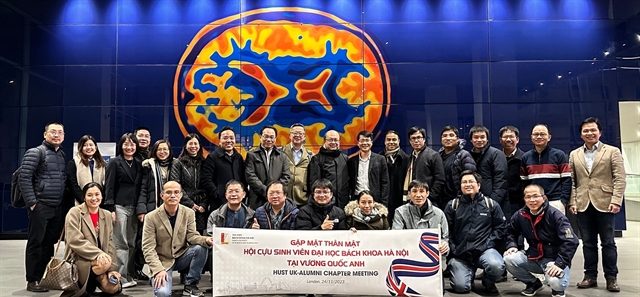
Alumnis of Hà Nội University of Science and Technology in the UK. — Photo courtesy of Sơn
Inner Sanctum: Regarding the crystal microstructure project published in Nature, please tell us more about it and its potential applications.
The crystal microstructure work combines principles of metamaterials and crystal science to create self-similar structures from atomic to macro scales. This allows for precise control over material properties.
When integrated with 3D printing and shape memory alloys, it enables programming of "smart" material behaviours, like the ability to change shape or communicate information within the material itself.
This technology has great potential for medical devices, transportation, and space exploration. For space, programmable high-strength materials could be used to construct facilities for future lunar or Martian space stations. We are in discussions with partners at NASA and ESA to explore real-world applications.
We've also collaborated with doctors at Hammersmith Hospital in London to apply the crystal microstructure approach to programme the shape of catheter tips, improving resolution and signals for cardiac surgery.
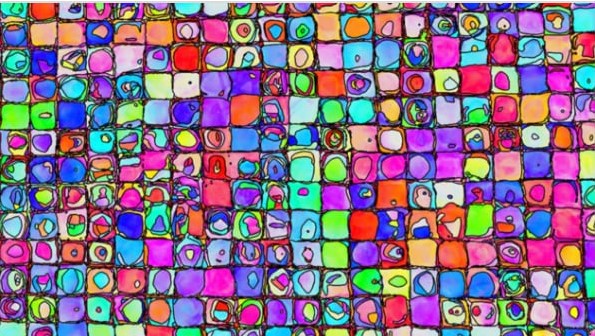
The metal structure is formed when 3D printing. — Photo courtesy of Sơn
Inner Sanctum: How have your collaboration with leading companies and organisations like Rolls Royce and ESA influenced your research and the development of practical applications?
Collaboration with industrial partners is crucial for our research. Real-world application problems are highly complex, and studying material behaviour under realistic, challenging conditions provides much more comprehensive scientific knowledge than idealised lab experiments.
Working with industry partners like Rolls Royce and ESA has several key benefits. It helps us identify the most relevant and impactful research problems to tackle, directly aligned with industry needs. The support and resources from these partners enable us to deploy our research findings much faster, accelerating the transition to practical applications.
Dealing with the constraints and requirements of real-world usage scenarios pushes our fundamental understanding of materials science in new directions. In addition, the collaboration allows us to more quickly iterate on solutions and closely monitor their performance and suitability for industrial implementation.
In short, these partnerships are invaluable for ensuring our advanced materials research has maximum real-world relevance and impact. The insights we gain from working with leading companies and organisations are essential for advancing the field.
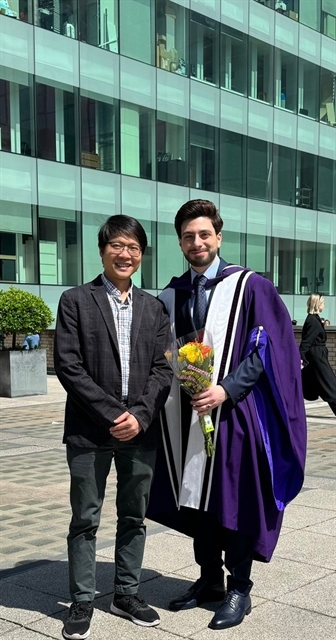
Phạm Minh Sơn and his student at Imperial College London. — Photo courtesy of Sơn
Inner Sanctum: What are your future plans and research directions in advanced materials for aviation, aerospace, automotive, energy, and medicine?
One particularly exciting future direction is the combination of three key technologies: metamaterials, 3D printing, and crystal phase transition phenomena.
By integrating these cutting-edge concepts, we hope to create a new class of lightweight, super-durable materials with truly intelligent capabilities. These "smart" materials could actively sense their environment, receive and transmit signals, and even evolve and adapt their properties over time - almost like living entities.
Parts and components made from these advanced materials would be able to perform their functions with greatly improved efficiency, reduced energy consumption, and extended lifespans. This could have transformative impacts across industries like aviation, aerospace, automotive, energy, and medicine.
The prospect of programming complex, responsive behaviours directly into the microstructure and composition of these materials is incredibly promising. We're still in the early stages, but we believe this integrated approach has enormous potential to drive sustainability and innovation in a wide range of critical application areas. VNS
OVietnam